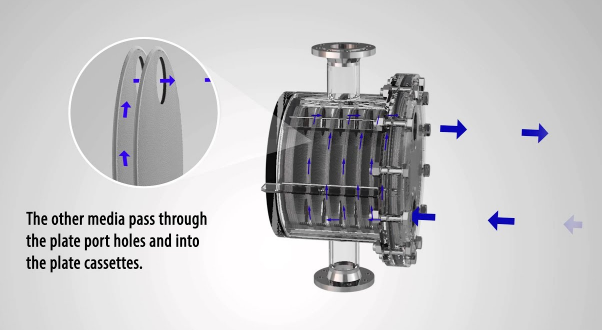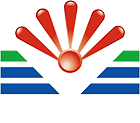What should you do to properly clean your plate and shell heat exchanger?
As we all know, after a long time, heat exchanger products will form some scale on the surface of heat exchanger elements such as plates. Although the scale rate of plate and shell heat exchangers is very low, it does not mean that it will not scale , So why is scaling and how to properly clean the plate and shell heat exchanger? Let me talk about it today.

First of all, we have to determine the cleaning requirements and rules of the plate and shell heat exchanger according to the type of process medium. The temperature and pressure drop are measured to determine whether the heat exchanger is at risk of fouling. When the pressure difference reaches an abnormal level or the temperature shows low heat exchange efficiency, the heat exchanger needs to be cleaned.
Generally, loose dirt accumulated on the surface of the plate can be removed by washing with warm water. The clear water flows at high speed on one side or both sides, and the flow direction must be opposite to the normal operation direction. The valve on the heat exchanger nozzle should be closed and the drain valve should be opened. Sewage and discharged sewage shall be treated according to local regulations. Then, if the dirt cannot be removed by clean water, it can be cleaned with a solution at a temperature below 60 º: containing 2% soda water (carbonate solution), 0,5% concentration of nitric acid, 5% concentration of sulfamic acid (not sulfuric acid) ) Or 5% concentration of phosphoric acid.
It should be noted that if the shell material is carbon steel, it is forbidden to use nitric acid to clean the shell side. If sulfamic acid is used, its concentration is reduced to 2%. Sulfamic acid will undergo hydrolysis due to temperature and time, so only use freshly prepared solutions. After cleaning with soda water or other cleaning agents, be sure to use water to clean the plates completely and carefully. It is forbidden to use phosphoric acid or sulfamic acid to clean titanium plates even at low concentrations.
The above is the cleaning method of common dirt by Qingdao Ruipute Heat Exchange Equipment Manufacturing Co., Ltd. Have you learnt that? However, it is necessary to declare that for the cleaning of some special dirt of the plate and shell heat exchanger, we still need to find a local professional cleaning company to consult, so that we will do more with less.
Related information
- The selection of quenching liquid cooling plate heat exchanger, selection design and use of raw materials are the key points
- Plate heat exchanger for ships, a multi-purpose vessel
- Ammonia refrigeration semi-welded plate heat exchanger mass production, new refrigeration industry system equipment
- How to avoid fouling and blockage of plate heat exchanger
- The heat exchanger effect of glucose is not good, because you did not use the GEA free flow plate heat exchanger
- Have you encountered this kind of problem when you used the sealing tape of the plate heat exchanger?
Relevant article
- Heat station supporting plate heat exchanger installation is a technical work, these points should be noted
- Sulfuric acid and other corrosive media for industrial plate heat exchanger requirements are what
- Simple and effective chemical cleaning method of coal chemical plate heat exchanger, can effectively improve efficiency
- A high-quality petrochemical plate heat exchanger in the production of what to consider
- These causes of chemical plate heat exchanger gasket aging you may not know
- Chemical plant plate heat exchanger, sulfuric acid cooling needs attention
- High-end plate heat exchanger customization, specifically for your special working conditions
- The working principle of gasket type industrial plate heat exchanger and the scenarios of its use are worth knowing in depth
- Still worrying about the wholesale price of industrial plate heat exchangers? An article to make you no longer tangled
- The original lubricant in the chemical plate heat exchanger plays so many roles!
Latest information
- Heat station supporting plate heat exchanger installation is a technical work, these points should be noted
- Sulfuric acid and other corrosive media for industrial plate heat exchanger requirements are what
- Simple and effective chemical cleaning method of coal chemical plate heat exchanger, can effectively improve efficiency
- A high-quality petrochemical plate heat exchanger in the production of what to consider
- These causes of chemical plate heat exchanger gasket aging you may not know
- Chemical plant plate heat exchanger, sulfuric acid cooling needs attention
- High-end plate heat exchanger customization, specifically for your special working conditions
- The working principle of gasket type industrial plate heat exchanger and the scenarios of its use are worth knowing in depth
- Still worrying about the wholesale price of industrial plate heat exchangers? An article to make you no longer tangled
- The original lubricant in the chemical plate heat exchanger plays so many roles!








